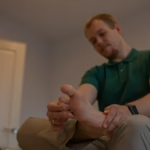Getting Back to Movement After Fat Transfer Surgery
According to the American Society of Plastic Surgeons, fat transfer breast augmentation has grown 20% over the past 5 years. More patients are choosing this natural option. But successful surgery is only half the battle—recovery matters just as much.
If you’re considering or have just had fat transfer breast augmentation, you’re probably wondering: What’s next? When will I feel normal? And can I move without screwing up my results?
Recovery from fat transfer breast augmentation is more than just resting. It requires patience, smart movement strategies and professional guidance to protect your results while you regain confidence and mobility. In this guide we’ll walk you through everything you need to know about moving during recovery.
What Is Fat Transfer Breast Augmentation and Why Recovery Matters
Fat transfer breast augmentation is a procedure where surgeons take fat from one area of your body and inject it into your breasts to add volume and shape.
This feels more natural than some other options. Your own tissue means less rejection risk. But the procedure involves two surgical sites: where the fat is harvested and where it’s injected. Both areas need time to heal.
Think of recovery like planting a garden. The seeds (transferred fat cells) need the right environment to take root. Too much movement or pressure too soon? The seeds won’t settle. Rest too long without gentle activity? Your muscles and circulation suffer. The sweet spot is guided, progressive movement—and that’s where physiotherapy becomes your secret weapon.
Your surgeon does the technical work. A physiotherapist guides your body back to function. Together, they get you healing beautifully and moving confidently.
Identifying Early Recovery Signs and When to Seek Support
In the first two weeks after surgery your body will send you clear messages. Learning to read these messages will prevent complications and keep you on track.
What to expect and when to get professional help:
- Swelling and bruising (3-4 weeks): Improves with elevation and gentle movement. Contact your surgeon if swelling increases after day 10.
- Tightness across your chest: Reduced range of motion is normal. Pain with light stretching after week 3 means you need professional guidance.
- Mild discomfort when moving: Some tenderness is normal. Sharp pain or numbness means get professional help now.
- Difficulty sleeping: Positions matter during recovery. A physiotherapist will teach you how to use your pillows and sleep correctly.
- Fatigue and slow healing: Persistent exhaustion or delayed healing means you’re not moving enough or there’s an underlying issue that needs to be assessed.
- Restricted arm movement: Limited shoulder mobility is normal. Gentle guided exercises will prevent stiffness.
Most importantly there’s no such thing as a silly question during recovery. Get in touch with your surgical team or physiotherapist early and prevent small issues from becoming big problems.
Recovery Movement Strategies and Physiotherapy Approaches
Your physiotherapy recovery plan depends on your surgical timeline. But there are principles that apply to every stage.
Guided movement strategies:
- Weeks 1–2 (Protection phase): Breathing exercises and minimal arm movement. Your physiotherapist teaches controlled, small range-of-motion activities. Think of this as “movement with a pause button” – active but restrained.
- Weeks 3–6 (Active phase): Gradually increase movement range and intensity. Physiotherapy includes gentle stretching, posture work and light strengthening. Your therapist makes sure you’re not pushing beyond healing boundaries.
- Weeks 7–12 (Functional phase): Get back to daily activities with purpose. Controlled strengthening exercises prepare you for normal routines. Your physiotherapist monitors form and adjusts based on your comfort level.
- Three months onward (Integration phase): Get back to regular fitness activities. Your therapist creates a personalized progression plan so you can confidently get back to exercise, sports or physical work.
- Scar tissue management: Gentle massage and specialized techniques prevent stiffness around surgical sites. This often prevents long term discomfort.
- Posture and body awareness: Poor posture during healing can cause long term tension. Physiotherapy corrects habits early so you can protect your results and comfort for years to come.
Each step builds on the last. Skip them? You’ll delay healing. Rush them? You’ll compromise your surgical results. Professional guidance ensures your recovery timeline matches your body’s actual healing capacity, not the calendar.
What Research and Clinical Experience Teach Us
Recent research has shown that getting some kind of physio guidance after breast surgery can make a big difference – in some cases up to 30% less complications. People who stick to a structured movement programme are a lot happier with the result, move more and get on with their body in the long term – no nasty lingering issues.
The Journal of Plastic Surgery Research says getting moving at the right time really does make a difference – it stops the skin contracting and your scars looking more natural. And it’s becoming more and more common for surgeons to work with physios – not just when things go wrong.
One patient said: “I always thought ‘rest’ meant just lying still for a few weeks after surgery – but my physio showed me that doing some gentle exercises can actually speed up your recovery. And 3 months on I’m feeling a lot stronger and more confident than I ever thought I would”
This is part of a bigger shift in thinking around how we recover from surgery. Recovery these days is about getting involved, working with a team and being part of the process. It’s about your surgeon, your physio and you all working together to get the best possible result, in the safest and most satisfying way.
Building Long-Term Health and Protecting Your Results
It doesn’t end after 3 months. Long term success is about smart movement habits and self care.
Protective practices for long term wellness:
- Move daily. Gentle daily activity keeps circulation and tissue health long after surgery.
- Practice good posture. This protects your surgical sites, looks better and prevents secondary tension patterns.
- Wear supportive clothing when recommended. Support during healing and after reduces stress on surgical areas.
- Listen to your body. Recurring discomfort means you need professional guidance not just rest.
- Stay hydrated and nourished. Healing requires resources – good nutrition supports tissue recovery at a cellular level.
- Don’t lift heavy prematurely. Progressive strengthening beats sudden strain every time.
- Attend follow up appointments. Your physio or surgeon spots issues early before they become problems.
Think of these as an investment. Months of careful movement now means years of comfort and confidence later. Small consistent choices add up to big long term results.
Your Path Forward: Moving Confidently Into Recovery
Fat transfer breast augmentation recovery – it’s a journey, not some endpoint you reach & then call it a day. When you get a handle on what to expect , that really does take the edge off anxiety . But let’s be real – with the right professional guidance & care , you’ll be way more likely to make a safe & steady progress.
Now your surgery was the starting point – the real magic happens during your recovery . If you’re weeks in or months ahead, remember this: your body has an incredible ability to heal – you just need some support, at the right time , & with the right advice to help it along.
Ready to take a confident leap through recovery without feeling like you’re just getting by? A physiotherapist with real expertise in post-op care will create a personal plan just for you, tailored to your schedule & goals. Want to check out some more post-surgical recovery tips on our blog? Alternatively you might be curious about preventative movement techniques to keep you feeling your best.
Head over to Physio Whisper to get some evidence based advice on all the wellness stuff & find a movement specialist who can help you out in your area.
References
- American Society of Plastic Surgeons (ASPS) – https://www.plasticsurgery.org
- Journal of Plastic Surgery Research – https://www.ncbi.nlm.nih.gov/pmc
- National Institutes of Health (NIH) – Surgical Recovery Guidelines – https://www.nih.gov
- American Physical Therapy Association (APTA) – https://www.apta.org
- Mayo Clinic – Breast Surgery Recovery – https://www.mayoclinic.org











